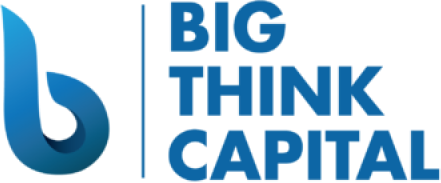Decoding the Impact of Federal Interest Rate Decisions on Your Small Business: Navigating Through Working Capital Advances and SBA Loans
Estimated Reading Time: 6 minutes
- Understand the influence of Federal Reserve decisions on interest rates.
- Learn how rising and lowering interest rates can affect your borrowing costs.
- Explore the implications of these rates on working capital advances and SBA loans.
- Gain strategic insights for managing your financing needs effectively.
- Discover diversification strategies for your funding sources.
Table of Contents
- Understanding Federal Interest Rates
- Working Capital Advances
- SBA Loans
- Strategic Insights for Business Owners
- Conclusion
- FAQ
Understanding Federal Interest Rates
The Federal Reserve (often referred to as the Fed) influences interest rates on loans through its monetary policy decisions. When the Fed raises or lowers the federal funds rate, it directly affects the cost of borrowing money. These changes ripple through the economy, impacting everything from personal loans to the financing options available for small businesses.
Rising Interest Rates
- When the Fed raises interest rates, the cost of borrowing increases. Lenders pass on these higher costs to consumers and businesses, making loans and other forms of credit more expensive.
- Small businesses may face higher monthly payments on existing loans and may be discouraged from borrowing additional funds due to increased costs.
Lowering Interest Rates
- Conversely, when the Fed lowers interest rates, borrowing becomes cheaper. This can stimulate economic activity as businesses are encouraged to take out loans for expansion, equipment purchases, or to cover operational costs.
Working Capital Advances
A working capital advance is a popular funding option for many small businesses, providing immediate access to necessary cash. However, the cost of a working capital advance is heavily influenced by interest rates.
Cost Implications
- Higher interest rates mean higher factor rates on advances, which can lead to larger repayments as each payment is based on a percentage of daily sales.
- With fluctuating interest rates, forecasting cash flows becomes difficult, which can strain operational budgets.
Strategy for Securing Advances During High Rates
- Small businesses can still secure working capital even during high-interest rate periods. It’s essential to present a robust business case showing consistent revenue and cash flow.
- Consider negotiating terms upfront. Lenders may be willing to offer better terms if you can demonstrate your business’s financial health.
SBA Loans
Small Business Administration (SBA) loans are often regarded as some of the most favorable financing options available to business owners due to their lower interest rates and longer repayment terms.
Interest Rates and SBA Loan Programs
- Interest rates for SBA loans are typically lower than traditional bank loans and can be more attractive when the Fed increases rates. These loans enable you to secure necessary funding without a significant financial burden.
- For example, as of 2024, the average interest rate for a 7(a) loan — the SBA’s most common loan program — fluctuated between 7.00% and 10.00%. This rate may vary based on factors like the lender and the qualifications of the borrower.
The Impact of Terms and Conditions
- SBA loans come with specific terms and conditions that can protect borrowers against sudden rate hikes. Fixed-rate options can provide stability in monthly payments.
- Be aware of the fine print; some loans include prepayment penalties that can affect your expansion plans.
Strategic Insights for Business Owners
Understanding the implications of interest rate decisions is vital for every small business owner relying on financing. By mastering your approach, you can make informed decisions that bolster your financial position.
Stay Informed About Economic Trends
- Keeping abreast of Federal Reserve meetings and their outcomes can provide insights into how interest rates will move. Anticipating these changes allows you to time your funding requests strategically.
- Utilize trusted financial news sources and updates from the Fed to remain informed.
Analyze Your Financing Needs
- Before applying for financing, take stock of what you truly need. Are you looking for a quick influx of capital to cover daily operations, or are you aiming for a longer-term investment?
- A clear understanding of your needs can dictate whether a working capital advance or an SBA loan is more appropriate.
Diversify Your Funding Sources
- Consider a mix of financing options, including lines of credit, equipment financing, and short-term loans. Diversifying can hedge against rising rates and provide flexibility in meeting your business’s demands.
- Established relationships with multiple lenders can also give you leverage in negotiations during times of increasing interest rates.
Conclusion
Interest rate decisions by the Federal Reserve are dynamic and play a crucial role in shaping the lending landscape for small businesses. By understanding their implications for funding options like working capital advances and SBA loans, business owners can navigate the complexities of financing more effectively.
At Big Think Capital, we are dedicated to helping small businesses secure the funding they need, even amidst changing economic conditions. Our experts can guide you through the process, ensuring that you make the best financial choices for your business.
If you are considering securing funding or want to learn more about how interest rates may impact your financing options, visit bigthinkcapital.com or speak with one of our funding specialists today. Together, we can find the right funding solution for your business, no matter the interest rate environment.






